One sad reality of the American apple growing scene over the past 100 years is that in the absence of a vibrant cider industry, eventually nearly all of the apples grown here were mass produced to one primary purpose – table food. Table apples have just the right texture, sweetness, and acidity to eat as fresh fruit. However, table apples all typically fall within a narrow spectrum of flavor profiles. Consequently, just as you would not expect a table grape to make a great wine, you should not expect a table apple to make a great traditional cider.
A photo taken at our taproom of our hard cider being poured.
One note here is that when I refer to “traditional” cider – I am referring to a dry cider that gets its flavor primarily from the apples and the yeast that was used. This is not to be confused with what we call “modern” cider. Modern cider tends to rely more on added sweetness and flavors such as with other fruits or sugar for its finished character. Ciders that are back-sweetened (meaning sweetness is added after fermentation is complete) with sugar or other fruit flavors derive most of their flavor from whatever is added.
Earlier in American history, we typically grew apples primarily for cider making and it was hard to make a sweet cider because we did not understand pasteurization.
According to the Illustrated Encyclopedia of Apples in the United States and Canada, 2018 (Daniel J. Bussey, JayKaw Press, LLC), there have been over 16,000 documented apple varieties in North America alone since Europeans brought apples to this continent! When our ancestors used Hewes Crab, Esopus Spitzenburg, Roxbury Russet, or Harrison apples, all of which were famous in their time for cider in America, they were making dramatically different ciders.
While some of these historic apple varieties were enjoyed both for cider-making and as table food, their primary purpose was cider-making. The primary component of many cider varieties missing from table apples is the tannin. As with red wines, many cider varieties have a high tannin content. In Europe, they are called bittersharps or bittersweets. High tannin apples tend to be bitter and/or have high astringency, which makes the tongue feel dry. Really high tannin apples are often unpleasant to the taste, earning the nickname “spitters.” Tannin does not get lost in the fermentation. Scientifically, they are called non-volatile phenols. With tannin, you get a different mouth feel and body to the cider with some bitterness and astringency. These characteristics make the cider delicious, unique, and special. In the very traditional cider regions of England and France, very high tannin levels in their ciders makes for a completely different flavor profile. At least some tannin content is important to prevent a dry cider from tasting insipid.
Acid is also not typically lost in fermentation, although it may transform through the fermentation process. Malic acid is the primary acid in apples. Malic acid is found in table varieties as well as cider varieties. Modern ciders are not typically aged at all. When you age cider in the fermenter or barrels, the cider often goes through a “malo-lactic fermentation” or “MLF.” This is a term familiar to wine makers. The MLF reduces the acidic sharpness in cider and brings different flavors such as spiciness, smokiness or buttery/butterscotch notes. These notes are common in traditional English or French ciders and were found in early American ciders.
Surprisingly, another component that shines in cider varieties is sugar. While table apples seem “sweet,” what you are really tasting there is unfermented sugar. It is easy to measure the sugar level in apples and truly sweet cider varieties often have much higher sugar than your typical table apple. Remember, the sugar in apples does not translate into a sweetness in the finished cider. It translates into alcohol content. Higher alcohol can have a positive effect on flavor, mouthfeel, and lends a preservative quality for ciders that might be aged in barrels and such.
Additionally, many cider varieties often have their own unique flavor components that are not consistent with the mainstream table apple. Red fleshed apples often have a high tannin level and can be used to make red or pink cider. Some varieties can taste exotic like pineapple, banana, cranberry, or nuts.
At Number 12 Cider, we make both traditional and modern ciders. We use traditional cider apples whenever we can, but we also use some table varieties to make modern ciders. Our very popular cider “slushies” for example, do not require fancy cider apples. Our award-winning SS Heritage, on the other hand, is made exclusively from traditional cider apples. In the resurging American cider scene, there are many great traditional cider makers who are growing their own cider apples on orchards all over the country, but there are also many great modern cider makers buying apples from others. Enjoy them both!



